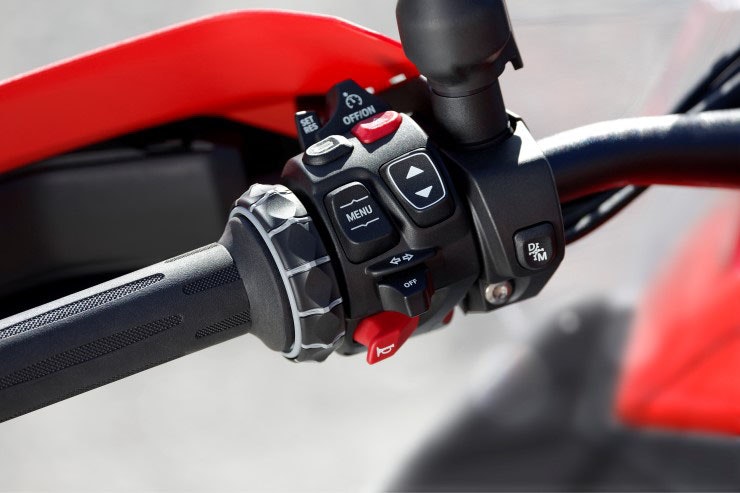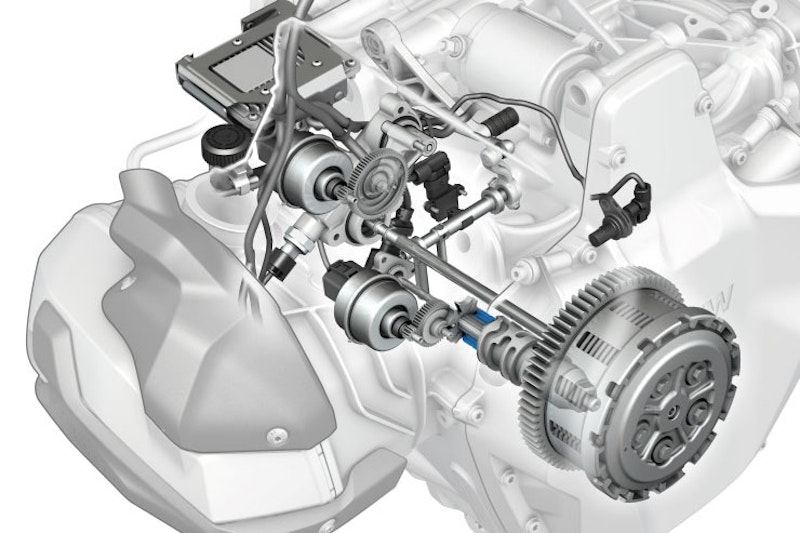BMW reveals automated gear shifter
By Ben Purvis
Motorcycle Journalist
07.05.2024
The manual gear shift isn’t something that riders have been happy to forego despite decades of attempts to develop a better solution – but recently acceptance around the idea has been growing and now BMW is jumping on the bandwagon with its new Automated Shift Assistant (ASA).
Set to be available later this year on an as-yet-undisclosed model or models, the BMW ASA system is the latest in a decades-long string of attempts to find a better solution than the traditional hand-operated clutch and foot shifter. Past efforts include the likes of Honda’s 1970s Hondamatic transmissions, Aprilia’s twist-and-go 850 Mana with a scooter-style continuously variable transmission, the Yamaha FJR1300’s YCC-S (Yamaha Chip Controlled Shift) and more recently Honda’s DCT (Dual Clutch Transmission) that’s proliferated across multiple models including the Gold Wing, Africa Twin, VFR1200 and NC750 ranges. It’s the Honda DCT, which entered the company’s range back in 2009, that’s really sparked interest from rivals. It’s proved hugely popular among buyers despite a substantial cost and weight penalty, and for 2024 Honda has developed its much cheaper, simpler E-Clutch – an option on the CB650R and CBR650R – to give some of the same benefits at a lower price.
BMW’s new ASA system is more like Yamaha’s YCC-S than either the Honda DCT or E-Clutch. DCT is a completely redesigned transmission with dual clutches – allowing two gears to be selected simultaneously and swapped by disengaging one clutch and engaging another in a seamlessly automated manner, either in fully-auto or semi-auto modes. The E-Clutch takes a completely different route, keeping almost all the same components as a standard transmission right down to the normal clutch lever and cable, but adds a small actuator to give the option of automating the clutch operation while leaving the shifting to the rider’s foot.
BMW’s ASA, like Yamaha’s YCC-S, is somewhere between the two, using electronic, computer-controlled actuators for the clutch and shifter but without a completely redesigned transmission. The system’s designers haven’t just bolted servo motors to the existing clutch actuator and gearshift then taken the rest of the afternoon off, though. The reengineering a bit more in-depth than that.
The clutch is operated by and electro-mechanical rotary actuator mounted on the engine that operates a hydraulic master cylinder connected to a normal clutch slave cylinder, essentially replicated the job normally done by the familiar lever on the left bar. Unlike Honda’s E-Clutch, the BMW system eliminates the manual clutch lever altogether, so there’s no option for the rider to take over control.
The gearshifts themselves are done by a second rotary actuator that turns a set of gears connected to transmission’s shift drum. A Geneva drive mechanism converts the rotary motion into intermitted, stepped movements to positively turn the drum, replacing the ratcheting arrangement that’s normally used with a foot-operated shifter.
There’s still a conventional-looking, conventional-feeling foot shifter, but it’s connected to nothing more than a switch that tells the system when you’ve called for a gearchange.
The BMW ASA system has two modes. In ‘D’ the entire process is automated, so the bike changes gear on its own as and when the Transmission Control Unit (TCU) calls for an up- or down-shift. An undisclosed number of sensors and parameters are used to control that shifting decision, but we can be sure that throttle position, revs, speed, rate of acceleration or deceleration, and even lean angle will be among the deciding factors as to whether a shift is required or appropriate. Careful tailoring of the clutch operation and shift timing, as well as integration with the bike’s existing electronic throttle control system, should make for smoother gearchanges than most riders can manage manually.
Alternatively, riders can select ‘M’ mode, which brings the conventional-looking foot shifter into play and lets them decide when the gear changes should be made, all while still ensuring the clutch operation is smooth and preventing inappropriate gear selection or stalling. A single bar-mounted button (integrated into the left-hand mirror mounting bracket so the main control pod can be carried over from the standard bike) switches between the modes.
Despite revealing details of the new system BMW has yet to confirm which models it will be available on. That’s something Honda did when announcing the E-Clutch last year, too, as the system was destined for new CB650R and CBR650R machines that the company didn’t want to unveil at that time. BMW’s reasoning might well be similar, as the photographs accompanying the release seem to be carefully curated to show the bar controls while revealing as little as possible about the machine they’re fitted to.
It's clearly an adventure bike, as shown by the hand protectors and the shape of the bars themselves, but the red and black paintwork and the blurry bodywork parts in the background don’t match the existing R1300GS. The technical illustrations, meanwhile, confirm that it does have the R1300GS’s new boxer twin engine.
That leaves one very clear candidate for the ASA system to be launched on – the yet-to-be-launched R1300GS Adventure. BMW’s normal launch pattern over the last few generations has seen the ‘Adventure’ version of the boxer GS models appearing 12 months after the base model, that’s definitely a bike we’re expecting to launch later this year. These pictures might well be our first glimpse of it.
If you’d like to chat about this article or anything else biking related, join us and thousands of other riders at the Bennetts BikeSocial Facebook page.
Share on social media:

